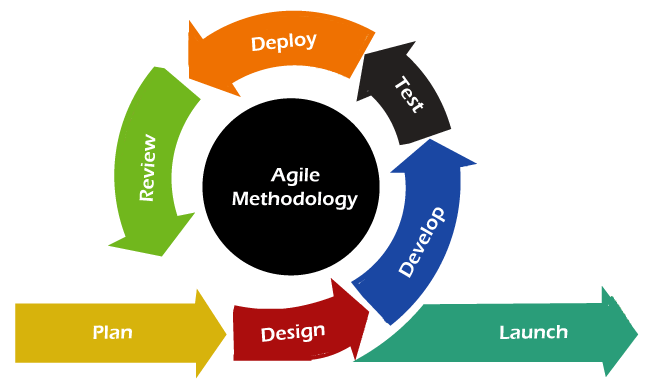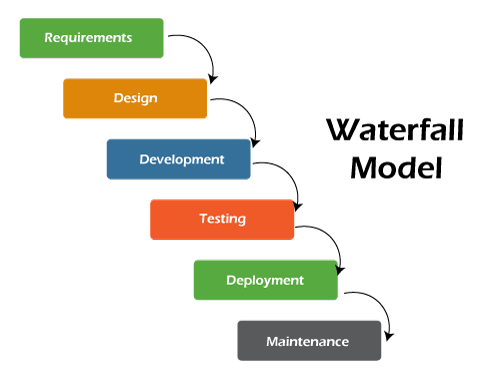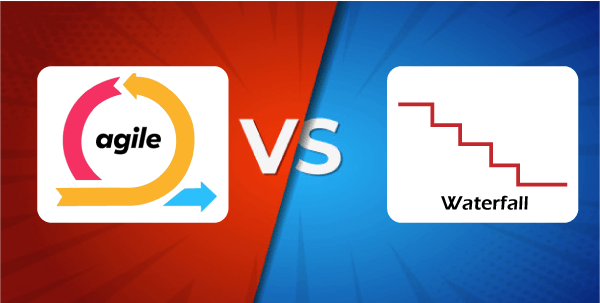There are numerous SDLC (Software Development Life Cycle) models that are followed during the software development phase. Each model follows a series of phases unique to its type to ensure success in the step of software development.
In this article, we are going to discuss two SDLC models that are Agile and Waterfall. Here, we will discuss both models separately, and then we will see the difference between them. Hope this article will be helpful to you in order to take information about the agile model, waterfall model, and their difference. So, without any delay, let's start the topic.
Agile Model
The Agile methodology promotes the continuous interaction of the development and testing during the SDLC process of any project. Unlike the waterfall model, the development and testing activities in the agile model are simultaneous. Agile methodology allows much communication between the customers, developers, testers, and managers.
In the Agile method, the entire project is divided into small incremental builds. All of these builds are provided in iterations, and each iteration lasts from one to three weeks.

Agile development methodology and testing practices have worked wonders for several organizations with positive aspects. The positive aspects of agile are not hidden. They are very much visible in organizations. There are some of the important points related to the agile model listed as follows -
- Agile focuses on customer feedback, collaboration, small and rapid releases.
- Its purpose is to manage complex projects.
- The Agile produces better application suites with the desired requirements. Moreover, it can quickly adapt according to the changes made on time during the project life.
- It has a small team size. Therefore, fewer people work on it so that they can move faster.
- The agile model is not a suitable model for small projects. The expenses of developing the small projects using agile are more than compared to other models.
- In agile methodology, the interaction of customers is very high, as after each iteration an incremental model is deployed to customers.
Now, let's move forward to the next model, i.e., the waterfall model.
Waterfall model
It is one of the easiest and traditional model to manage. Because of its traditional development nature, each phase has specific deliverables and a review process. The waterfall model works well in smaller size projects where requirements are easily understandable.

The waterfall model is a universally accepted SDLC model. In this method, the whole process of software development is divided into various phases. The development in the waterfall model is seen as flowing steadily downwards (like a waterfall) as it is a continuous software development model. This model is named "Waterfall Model", because its diagrammatic representation resembles a cascade of waterfalls. Some important points related to the waterfall model are listed as follows -
- Waterfall model is not an ideal model to develop a large scale project size.
- The requirements in the waterfall model should be clear cut at the beginning time; otherwise, it may lead to a less effective method.
- In the waterfall model, it is hard to move back in order to make changes in the previous phase.
- The testing process in the waterfall model starts after the completion of development. So, there is a high chance of bugs to be found later in the project development.
Now, let's look at the difference between both models.
Agile model v/s Waterfall model

The comparison between both models is tabulated as follows -
|
S.no. |
Purpose |
Agile model |
Waterfall model |
|
1. |
Definition |
Agile model follows the incremental
approach, where each incremental part is developed through iteration after
every timebox. |
Waterfall model follows a sequential design
process. |
|
2. |
Progress |
In the agile model, the measurement of
progress is in terms of developed and delivered functionalities. |
In the waterfall model, generally the
measurement of success is in terms of completed and reviewed artifacts. |
|
3. |
Nature |
Agile model is flexible as there is a
possibility of changing the requirements even after starting the development
process. |
On the other hand, the waterfall model is
rigid as it does not allow to modify the requirements once the development
process starts. |
|
4. |
Customer interaction |
In Agile model, there is a high customer
interaction. It is because, after every iteration, an incremental version is
deployed to the customer. |
Customer interaction in waterfall model is
very less. It is because, in a waterfall model, the product is delivered to
the customer after overall development. |
|
5. |
Team size |
It has a small team size. As smaller is the
team, the fewer people work on it so that they can move faster. |
In the waterfall model, the team may consist
more members. |
|
6. |
Suitability |
Agile model is not a suitable model for
small projects. The expenses of developing the small projects using agile is
more than compared to other models. |
Waterfall model works well in smaller size
projects where requirements are easily understandable. But waterfall model is
not suitable for developing the large projects. |
|
7. |
Test plan |
The test plan is reviewed after each sprint. |
Test plan is reviewed after complete
development. |
|
8. |
Testing |
Testing team can take part in the
requirements change phase without problems. |
It is difficult for the testing team to
initiate any change in needs. |
So, that's all about
the article. Here, we have seen a brief description about both models, and the
difference between them.



0 Comments